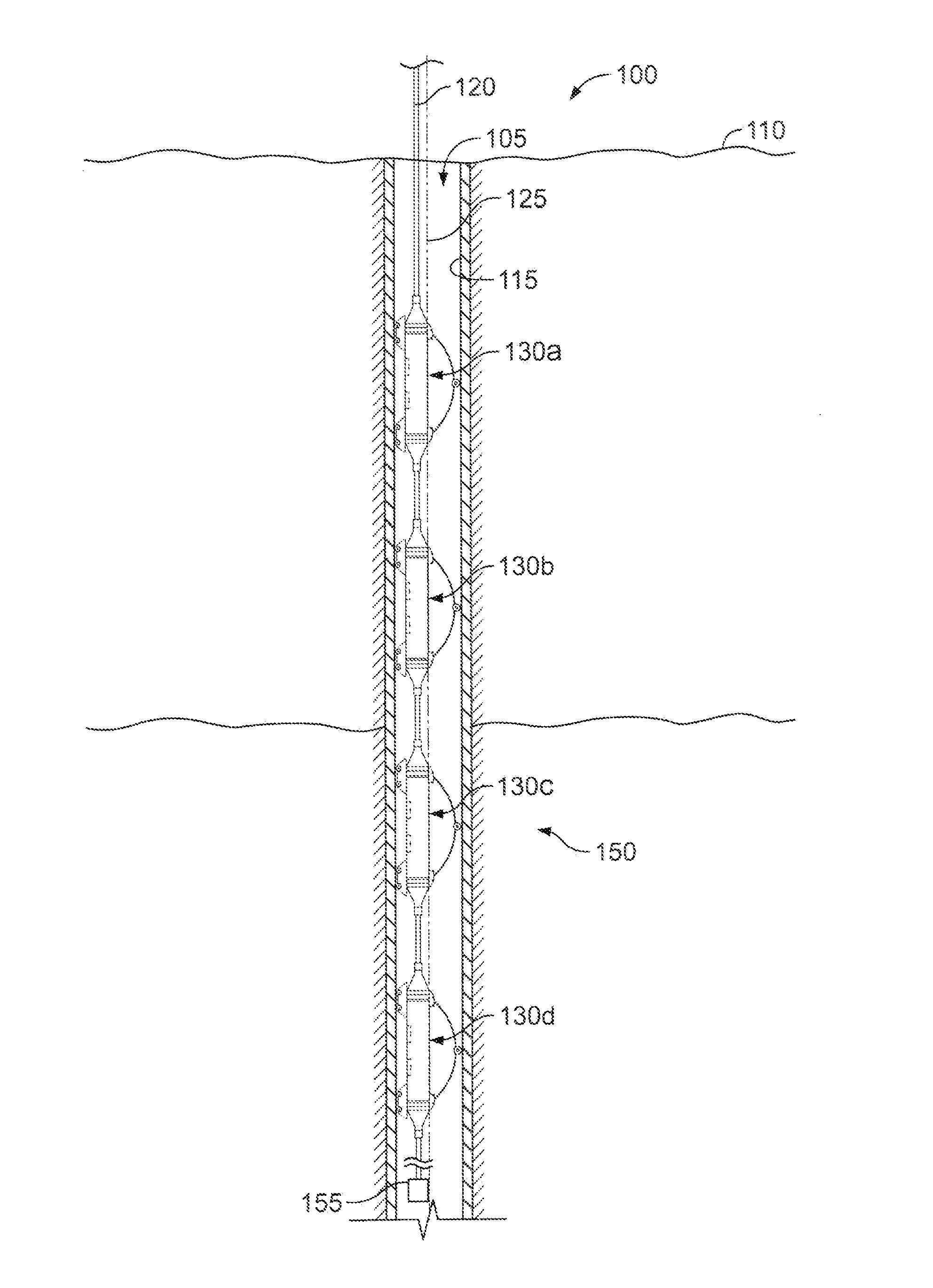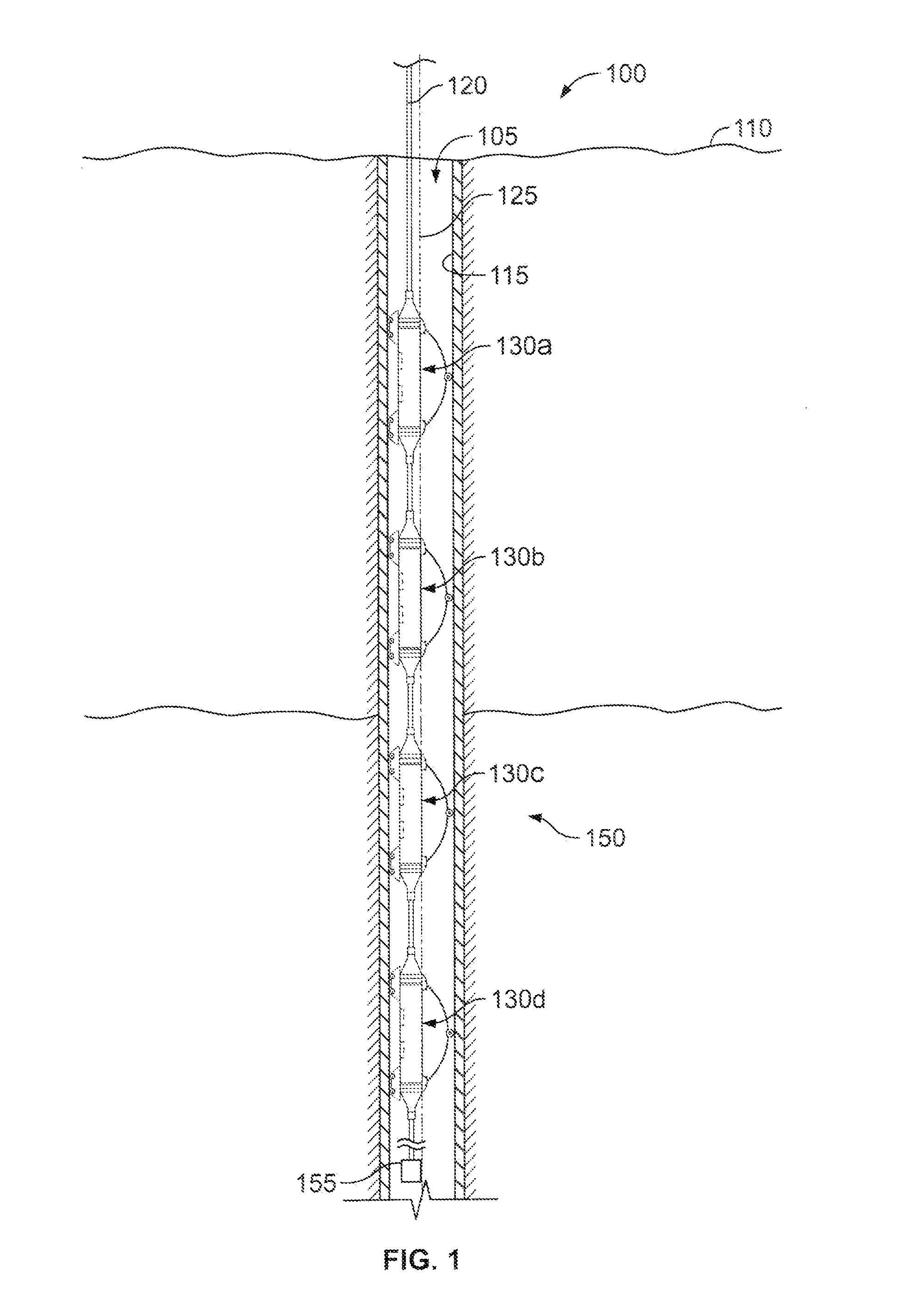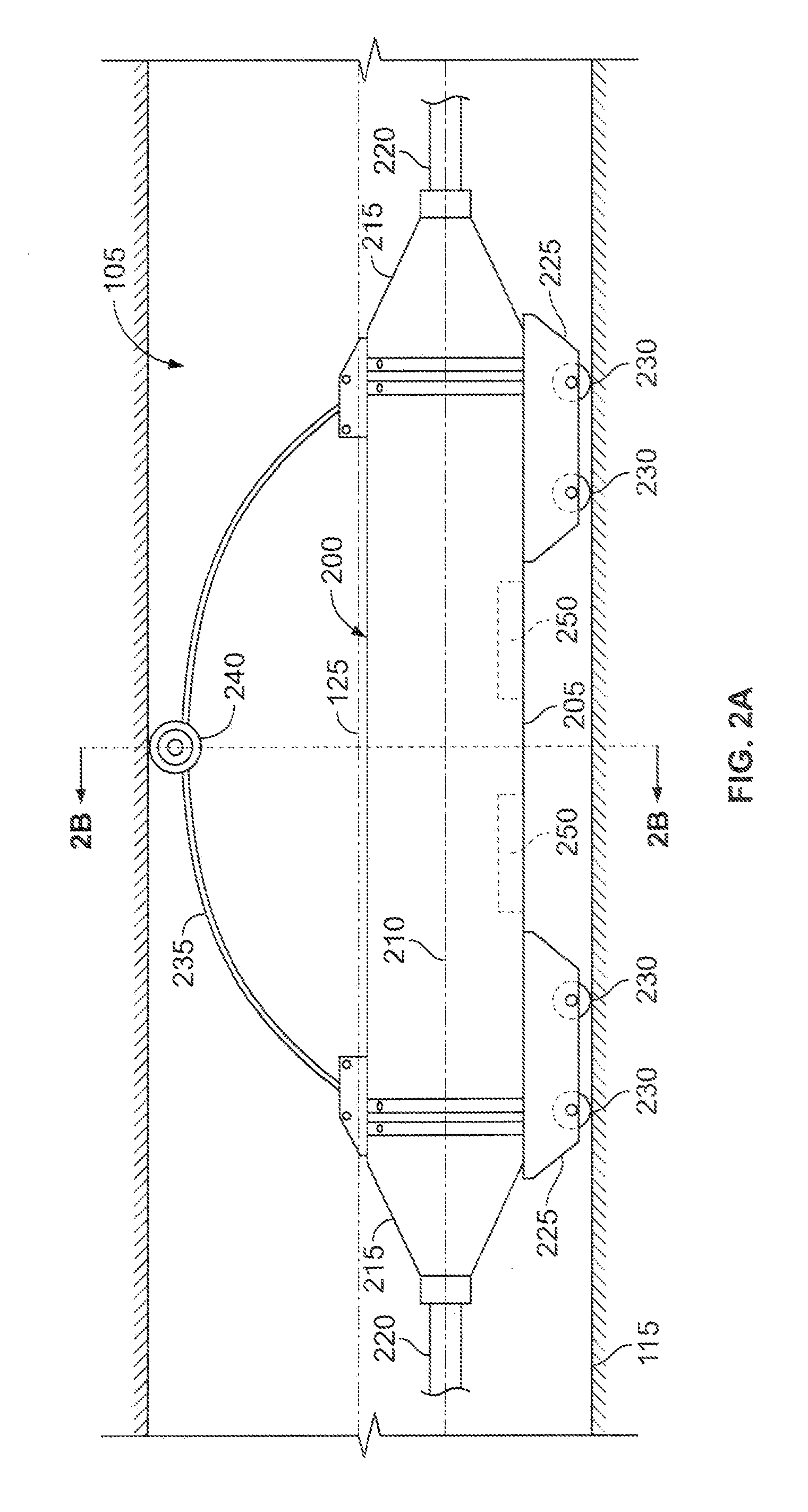Detecting Seismic Data in a Wellbore
a technology of seismic data and wellbore, which is applied in the field of detecting seismic data in a wellbore, can solve the problems of increasing the difficulty of lowering and raising the seismic tools hung on the cable, affecting the accuracy of seismic data, so as to achieve better acoustic coupling, high clamping pressure, and low friction
- Summary
- Abstract
- Description
- Claims
- Application Information
AI Technical Summary
Benefits of technology
Problems solved by technology
Method used
Image
Examples
Embodiment Construction
[0028]In some embodiments of a seismic tool in accordance with the present disclosure, one or more roller bearings may be secured to a housing of the tool. The tool may also include a bow spring attached to the housing and including one or more rollers (e.g., roller bearings, casters, bronzed bushings, spherical rollers, axled rollers or bearings, or other roller devices). The bow spring has a predetermined radius and spring force. As the seismic tool is deployed within a borehole, the spring force engages the rollers with a borehole wall. The seismic tool is offset with the borehole such that a longitudinal centerline of the housing is offset from a centerline of the borehole. In some embodiments, the rollers may allow for reduced friction contact between the seismic tool and the borehole wall such that repositioning and deployment of the seismic tool within the borehole may be made easier. For example, a force required to reposition and / or deploy the seismic tool may account for a...
PUM
 Login to View More
Login to View More Abstract
Description
Claims
Application Information
 Login to View More
Login to View More - R&D
- Intellectual Property
- Life Sciences
- Materials
- Tech Scout
- Unparalleled Data Quality
- Higher Quality Content
- 60% Fewer Hallucinations
Browse by: Latest US Patents, China's latest patents, Technical Efficacy Thesaurus, Application Domain, Technology Topic, Popular Technical Reports.
© 2025 PatSnap. All rights reserved.Legal|Privacy policy|Modern Slavery Act Transparency Statement|Sitemap|About US| Contact US: help@patsnap.com



